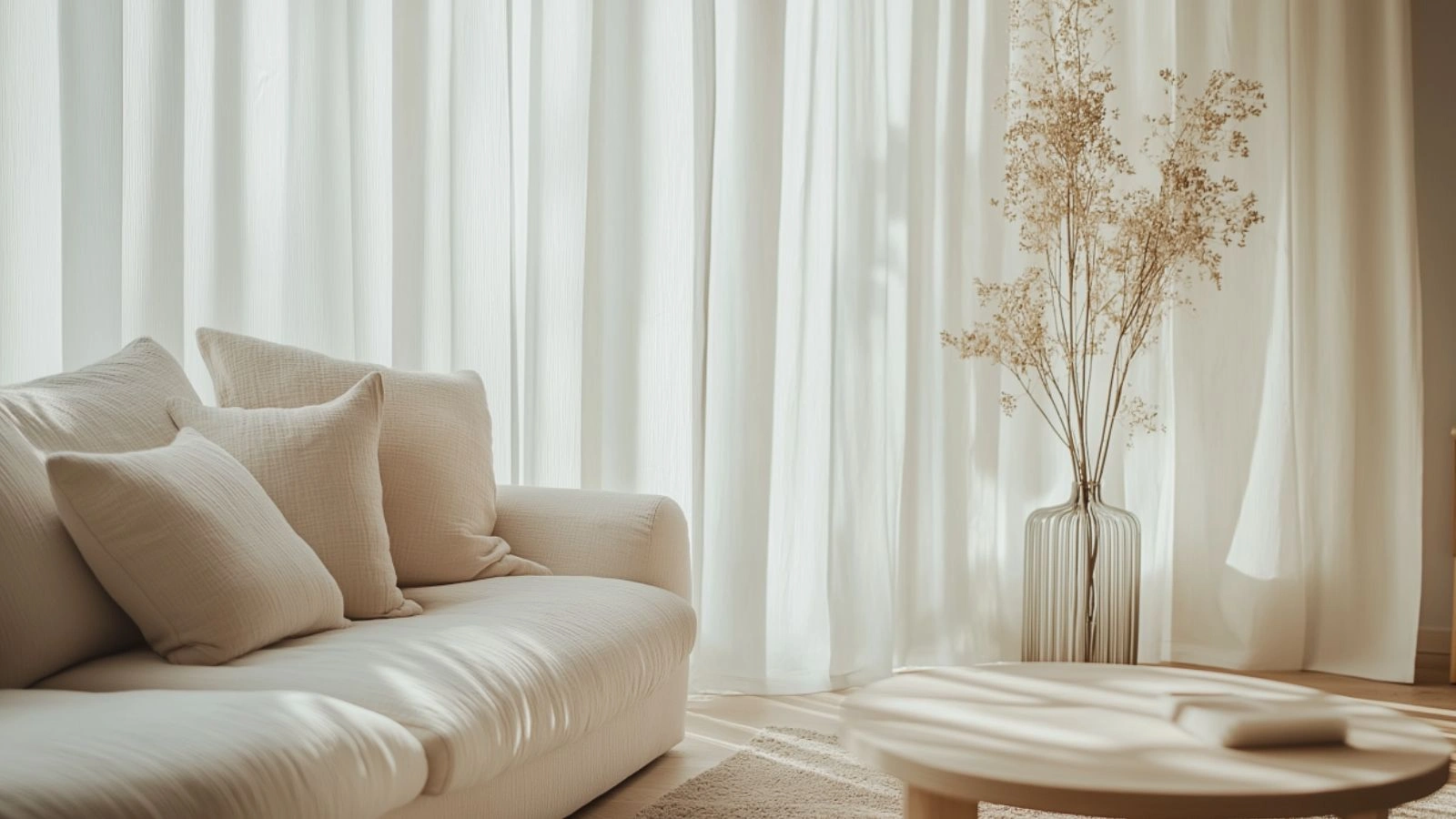DIY Living Room Divider Projects to Enhance Your Decors and Define Space Beautifully
Table of Contents
Open floor plans are beloved for their airy, expansive feel—but sometimes, a little structure is needed. Whether you’re working with a studio apartment, a large combined living-dining space, or just want to create visual separation without remodeling, a living room divider can be the perfect solution. In fact, room dividers have become a favorite tool in modern interior design, offering flexibility, style, and functional value—all in one.
But you don’t need to invest in expensive custom partitions or hire a contractor to redefine your space. With a little creativity and some DIY enthusiasm, you can craft beautiful and practical living room dividers that not only organize your space but enhance your decor. From shelving units that double as walls to hanging textile dividers and reclaimed wood partitions, there are plenty of stylish, budget-friendly options to explore.
In this guide, we’ll walk you through a variety of DIY living room divider projects, breaking down materials, construction tips, and design ideas. Whether you’re looking for rustic charm, minimalist style, or cozy separation, you’ll find inspiration to make your living room both functional and beautiful.
Use Open Shelving Units as Stylish Partitions
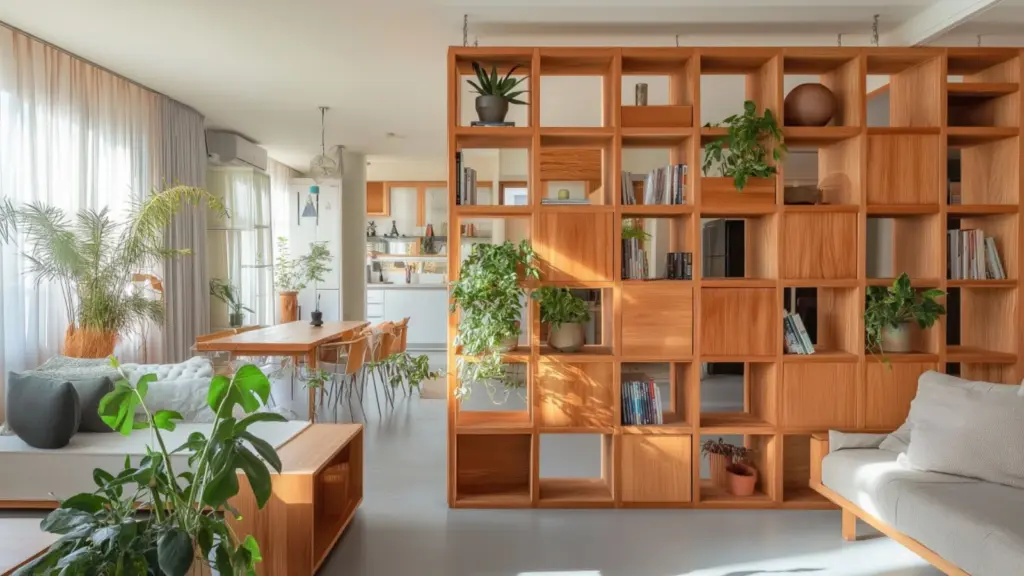
One of the easiest ways to divide a living space without sacrificing light or openness is with open shelving. A tall bookcase or cube shelf can act as a visual boundary while also providing practical storage and display opportunities. Best of all, you can build or modify one yourself with simple materials like pine boards or MDF.
The key to success with this idea is keeping it light and balanced. Choose an open-back design so the unit doesn’t block natural light, and alternate between decor items and negative space to prevent visual clutter. Plants, baskets, ceramics, and books work beautifully to style each cube or shelf.
For a DIY project, consider customizing an IKEA Kallax shelf with wood trim, legs, or a painted finish. You can also build a frame using 1×10 boards and create open box compartments with screws and wood glue.
Visual Table: Open Shelf Divider Breakdown
| Material Needed | Purpose | Style Tip |
|---|---|---|
| MDF or Pine Boards | Structure/frame | Stain for a natural wood look |
| Wood Glue + Screws | Assembly | Secure with brackets |
| Decorative Elements | Function & visual interest | Use baskets for hidden items |
| Paint or Varnish | Finish and protection | Match room color palette |
Create a Hanging Textile Divider for Soft Separation
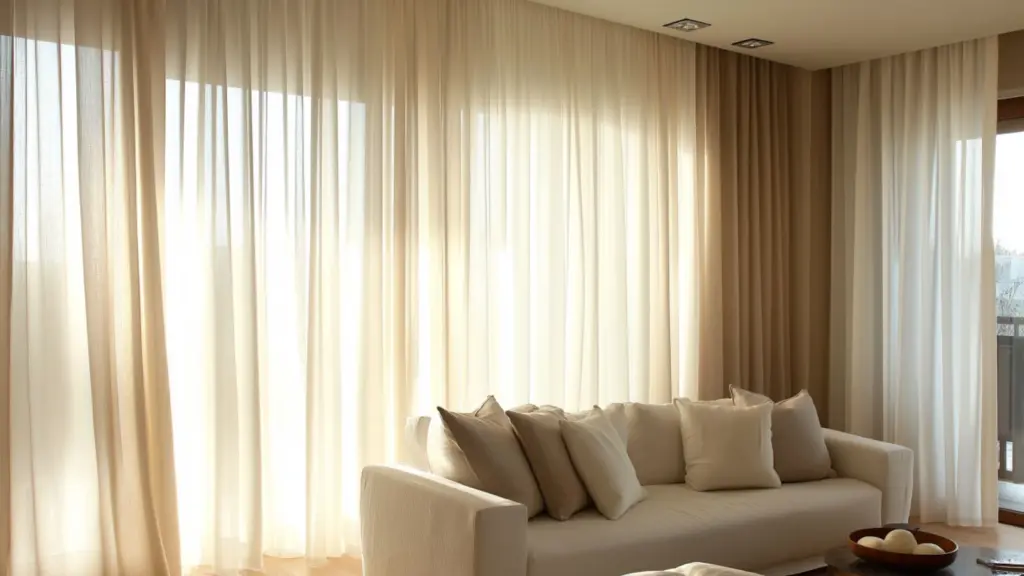
For renters or anyone looking for a lightweight solution, a hanging textile divider is a go-to option. Using curtain rods or ceiling-mounted tracks, you can suspend fabric panels to separate areas without any permanent changes. It’s easy to install, even easier to switch out seasonally, and adds a touch of softness to any space.
This approach allows you to play with texture and color. Sheer linen offers an ethereal, boho vibe, while heavier velvet adds elegance and sound dampening. You can even use macramé for an artistic, handcrafted look.
Installation is simple: install ceiling hooks or a tension rod, hem your fabric to the desired length, and use curtain rings or clips for easy movement. This divider also works well in smaller apartments where flexibility is key.
Fabric Divider Setup Table
| Component | Suggested Option | Effect on Space |
|---|---|---|
| Fabric Type | Linen, cotton, velvet | Softens and defines zones |
| Hanging Method | Ceiling track, tension rod, hooks | Flexible and renter-friendly |
| Color/Pattern | Neutral solids or gentle stripes | Keeps look cohesive |
| Width Recommendation | 4–6 ft (adjustable) | Enough to define without enclosing |
Build a Sliding Barn Door Divider for Rustic Functionality
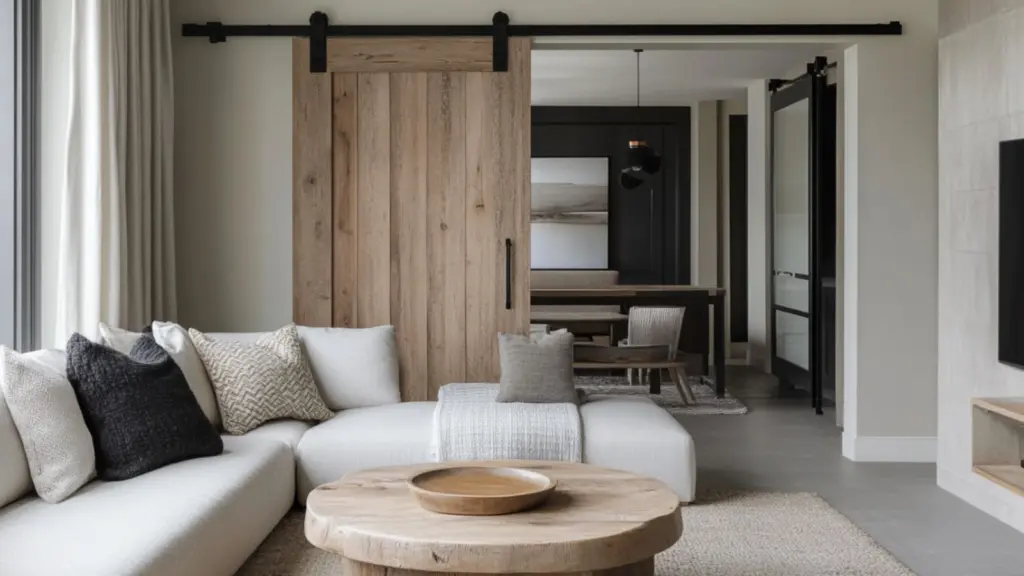
This expanded section focuses on building a custom sliding barn door room divider, a bold yet elegant solution for larger spaces or homes with a rustic-modern aesthetic. Sliding barn doors add texture, movement, and architectural interest—all while being incredibly functional.
To DIY a barn door divider, you’ll need plywood or repurposed planks, a barn door sliding kit, a track (mounted to the ceiling or beam), and handles. You can go traditional with X-bracing details or keep it contemporary with a smooth, painted slab.
The sliding mechanism allows you to open up your space when needed or close off an area for privacy. This is ideal for dividing a living room from a home office, dining space, or entryway. Plus, with the right finish, it becomes a focal point.
DIY Barn Door Divider Table
| Item | Material/Tool | Function |
|---|---|---|
| Door Slab or Planks | Pine boards or reclaimed wood | Divider panel |
| Barn Door Hardware Kit | Track, rollers, stoppers | Enables smooth sliding |
| Stain or Paint Finish | Matte black, whitewash, oak stain | Matches interior design |
| Handle or Pull | Metal or leather | Enhances usability |
Repurpose Old Window Frames as Decorative Dividers
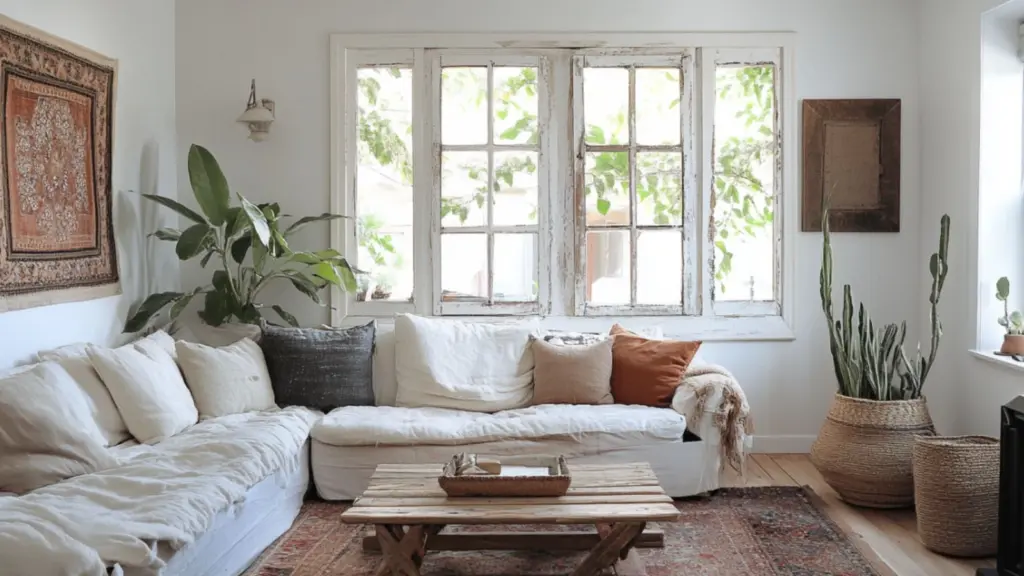
Old or vintage window frames offer a charming and eco-conscious way to add division without losing light. Salvaged windows can be attached to a freestanding base or even suspended from the ceiling to define areas while keeping the space bright and airy.
Paint or refinish the frames to match your decor. You can leave the glass clear or frost it for privacy. Use three or four panels hinged together for a folding screen-style divider, or mount a single large frame to act as a see-through partition.
This project adds character and a unique architectural touch to open living spaces, especially in farmhouse or cottage-style homes.
Repurposed Window Frame Ideas Table
| Frame Style | Suggested Use | Visual Impact |
|---|---|---|
| Tall Multi-Pane Frame | Standing divider, mounted base | Airy vintage vibe |
| Frosted or Etched Glass | Increased privacy, decorative finish | Softens light transmission |
| Distressed Paint Finish | Adds rustic charm | Fits shabby chic decor |
| Mounted with Hooks | Suspended divider | Keeps floor space open |
Design a Planter Wall for a Green Living Partition
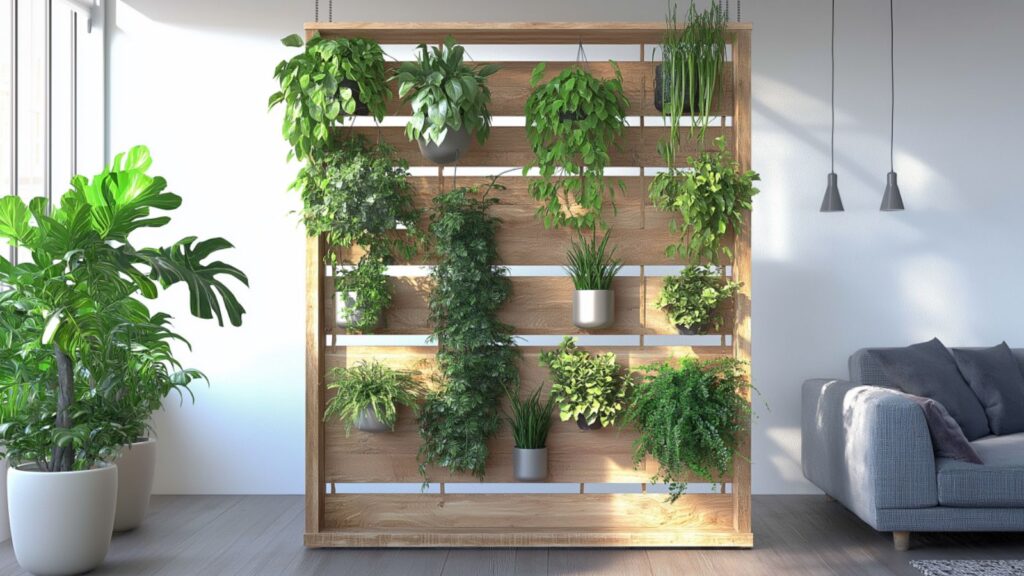
This expanded section highlights a functional and visually stunning option: a living plant divider. Vertical garden walls not only separate space but also purify the air and bring nature indoors—perfect for a serene, biophilic aesthetic.
To build a DIY planter wall, use a wood frame fitted with shelves or hanging pots. Attach it to a base or ceiling-mounted supports. Fill it with trailing ivy, pothos, herbs, or succulents. For low-maintenance, opt for faux greenery with realistic texture.
Keep lighting in mind—ensure the plants get adequate natural or artificial light. This solution is excellent for dividing a lounging area from a dining nook, while adding life and vibrancy.
Planter Divider Setup Table
| Component | Suggested Plant/Item | Style Benefit |
|---|---|---|
| Frame or Ladder Base | Wooden shelving or metal grid | Supports plant structure |
| Plant Selection | Pothos, philodendron, herbs | Lush, air-purifying, aesthetic |
| Pot Type | Ceramic, rattan, recycled plastic | Cohesive and eco-friendly |
| Lighting | Near window or with grow lights | Keeps plants healthy |
Craft a Folding Screen for a Flexible Layout
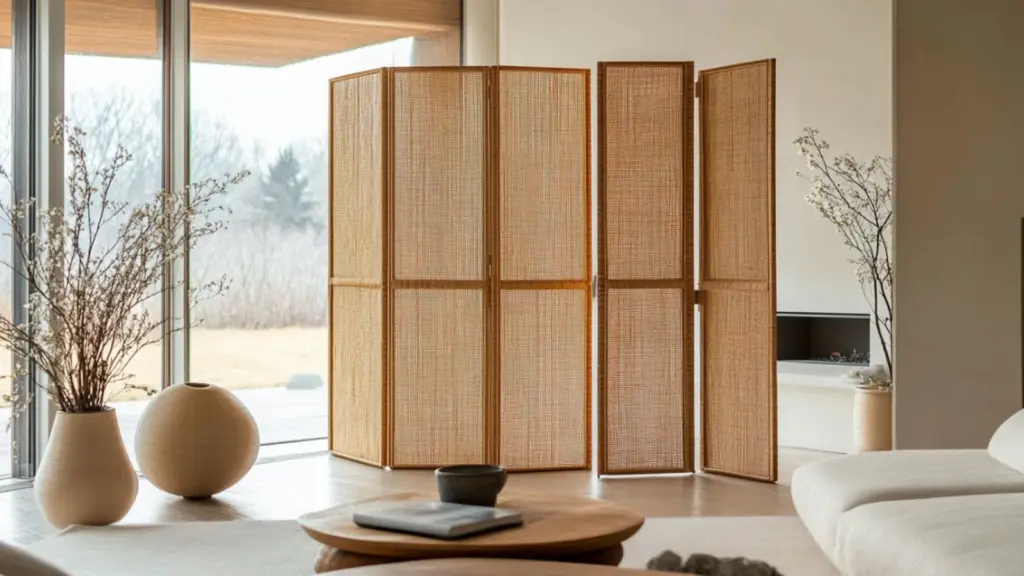
A folding screen offers flexibility and instant privacy, making it perfect for dynamic living room spaces. Plus, it can be easily moved, stored, or reconfigured. With a little creativity, you can build a custom screen using hinges and panels of wood, fabric, or even cane webbing.
Paint the panels to match your walls or decorate them with wallpaper for an eye-catching accent. You can also upholster the panels for a soft, noise-dampening touch. This type of divider is ideal for renters or anyone who prefers a non-permanent layout.
DIY Folding Screen Breakdown
| Material Option | Best For | Style Direction |
|---|---|---|
| Solid Wood Panels | Durability and structure | Painted or stained finishes |
| Fabric Upholstery | Sound absorption and softness | Use bold patterns or neutrals |
| Cane or Rattan Insert | Breezy, textural look | Coastal or boho styles |
| Hinges | Connect panels | Allow flexibility and movement |
Upcycle Pallets into a Rustic Divider Wall
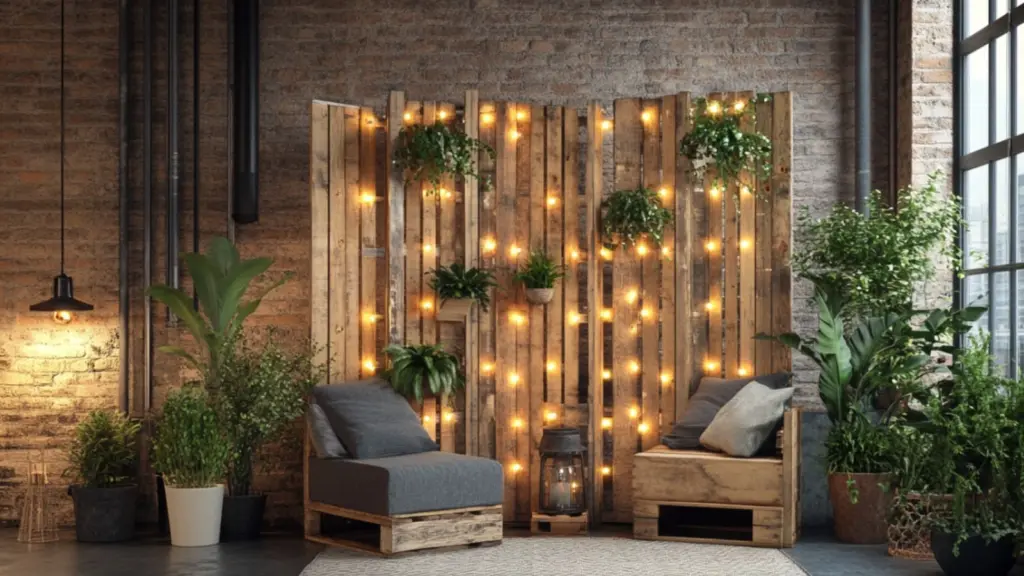
Wooden pallets are a DIYer’s dream—affordable, available, and versatile. With a bit of sanding and staining, they can be transformed into a rustic room divider that adds warmth and charm to your living room.
You can stack pallets vertically and attach them with brackets or hinges to make a freestanding wall. Use the horizontal slats to hang plants, frames, or string lights. This project brings a farmhouse or industrial feel and is especially great in open loft spaces.
Rustic Pallet Divider Project Table
| Pallet Use | Style Tip | Functional Bonus |
|---|---|---|
| Vertical Stacked Wall | Stain for a warm wood tone | Use as display space |
| Hinged Folding Design | Paint in muted color | Portable and flexible |
| Add Planter Hooks | Integrate greenery or herbs | Enhances natural appeal |
| Backlit LED Strips | Highlight texture | Creates cozy ambient lighting |
Conclusion
DIY living room divider projects offer more than just function—they’re an opportunity to add personality, texture, and thoughtful design to your space. Whether you’re repurposing old materials, playing with textiles, or building a custom feature from scratch, each option allows you to tailor your layout and express your style. From greenery-filled walls to vintage window frames, these ideas balance beauty with practicality. By thinking creatively and working within your space, you can redefine your living room in a way that feels both dynamic and refined.

